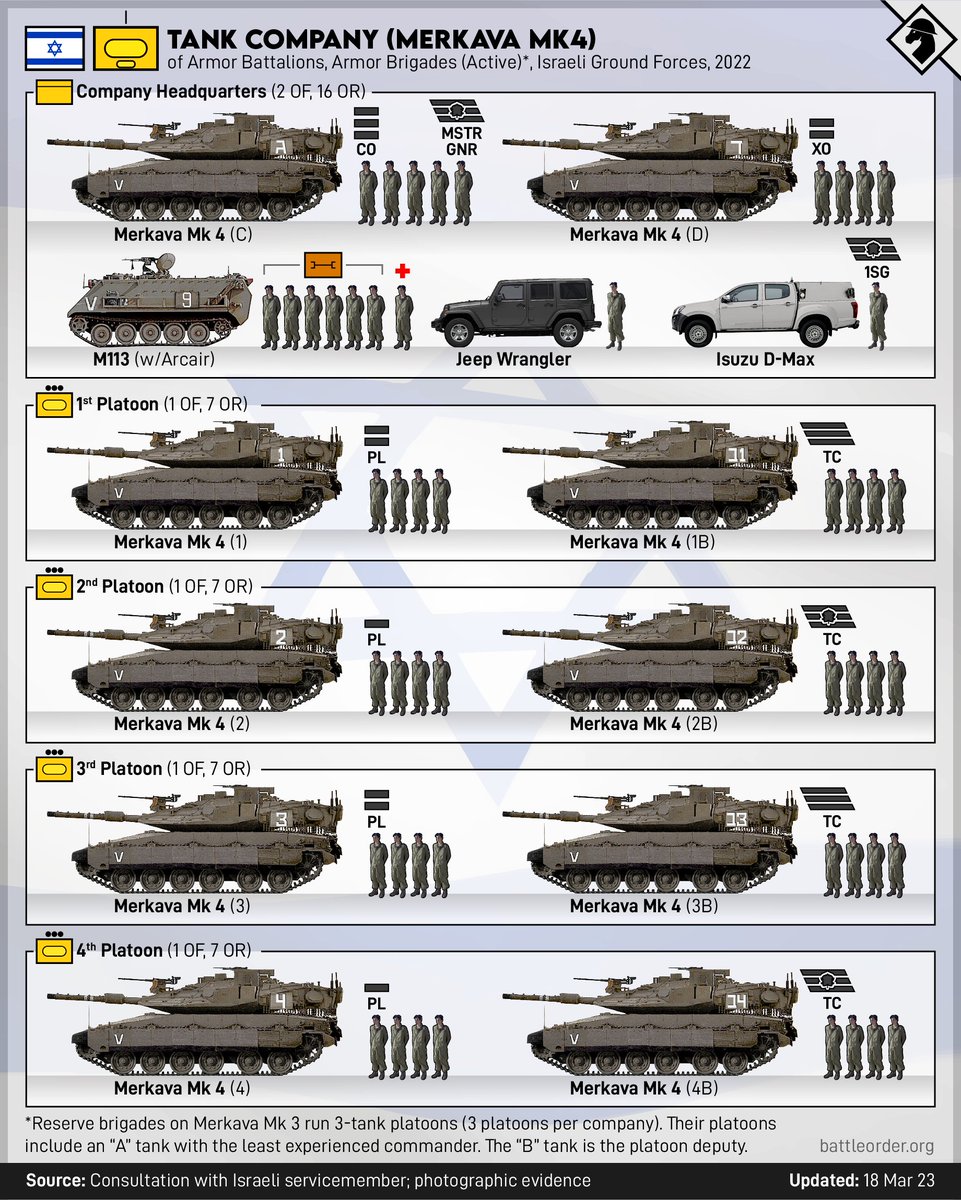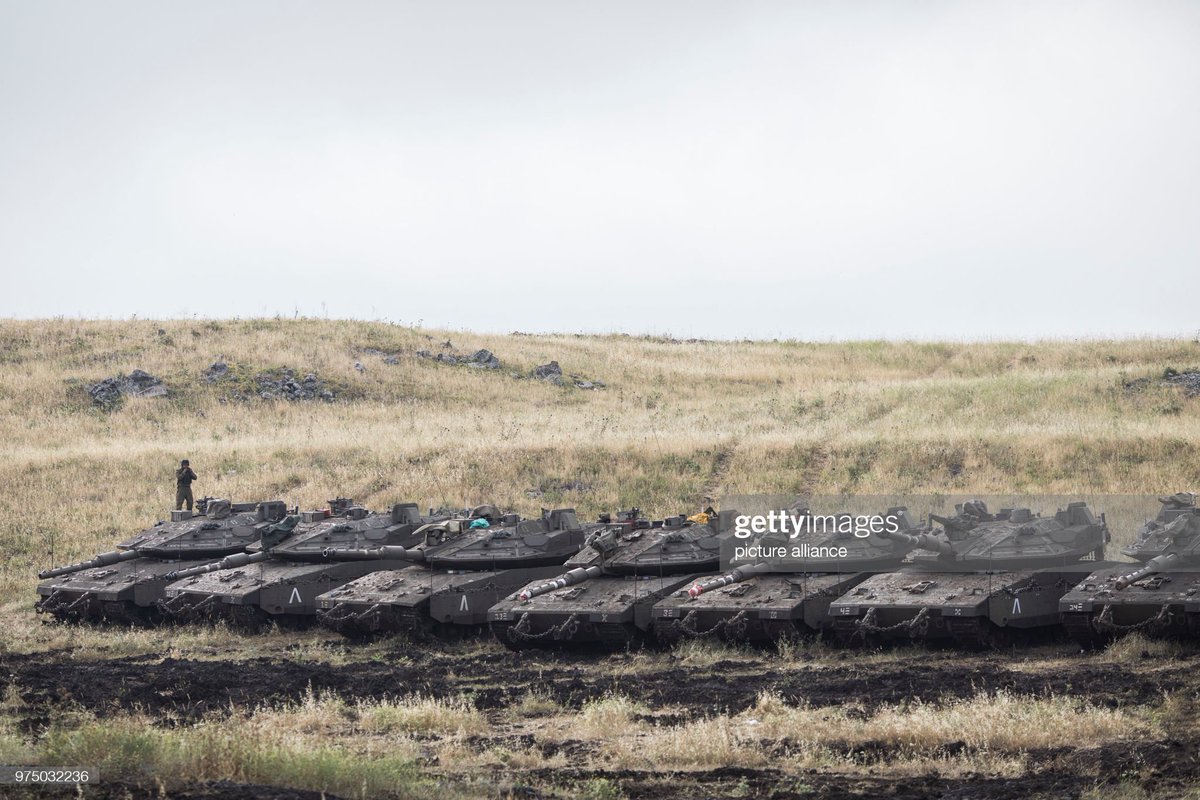
1/ An odd one, the 🇮🇱 Israeli Tank Company (active) mounted on the Merkava Mk4. It's notable for having only 2 tanks per platoon (although reserve units with Merkava Mk 3s have 3-tank platoons, but only 3 platoons) #idf 

2/ The numbering scheme:
Battalion CO - ג10
Battalion XO - ג11
Company CO - ג (Charlie)
Company XO - ד (Delta)
Platoon Leaders - 1, 2, 3, 4
Platoon Deputies - ב1, ב2, ב3, ב4 (Bravo)

Battalion CO - ג10
Battalion XO - ג11
Company CO - ג (Charlie)
Company XO - ד (Delta)
Platoon Leaders - 1, 2, 3, 4
Platoon Deputies - ב1, ב2, ב3, ב4 (Bravo)


4/ These numbers are seen here repeated on their right-front mudguards. From left to right there's unmarked, 1B, 1, 3B, 3, 4, and 4B (reinforcing the two-tank platoon scheme). 

5/ The number of rings on the barrel also symbolizes the battalion number (which is repeated as a numeral on the front-left mudguard). 

6/ The "V" IFF marker on the sides represents the company, as does the rightmost horizontal lines on the front-right mudguard.
1st Company - V
2nd Company - > (facing forward)
3rd Company - ^
4th Company - < (facing rearward)
1st Company - V
2nd Company - > (facing forward)
3rd Company - ^
4th Company - < (facing rearward)

7/ I've been told the 2-tank plts is due to the low availability and expense of the Merkava Mk 4, although this was hold to me by an enlisted soldier so who knows. I've also been told that it's compensated for by technology (like APS and warning receivers) 

8/ My personal theory is that supporting infantry/engineers with more attached plts is more of a need than optimizing for peer armored warfare. The Israelis were experimenting with smaller 7-tank coys at one stage, with 2x autonomous plts. This may be a refinement of that 

9/ Also, almost everyone in the coy is a conscript (except for the 1LTs and CPTs who have started their extended service). The conscript term is 32 months for men, so Field NCOs don't benefit from the same experience a US Army Sergeant 1st Class would bring to a 2-tank section 

10/ I'm told that when conducting a tank-forward mission, the company maneuvers as a whole (sometimes as 2 half-companies of 2 platoons each under the CO and XO). The 4th platoon is also often attached out to an infantry/engineer unit. 

11/ Also, Israel does have a custom version of the Jeep Wrangler called the AIL Storm (right). But I’ve been told by a vet that they’ve been replaced as liaison/CO vics in his unit by civilian Wranglers in black (left) 



12/ I’ve been told conflict things on the Master Gunner, but the CO’s tank has 5 crew members. Might be unit dependent, but either the CO or MG works from the loader’s hatch. If they have to button up, they have to move to the rear passage
13/ This might also be the case in XO’s tank, with a dedicated tank crew commander so the CO/XO can focus on leading the company. Their crews are also typically chosen for proficiency so they don’t have to be micromanaged 

• • •
Missing some Tweet in this thread? You can try to
force a refresh





















